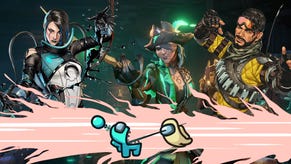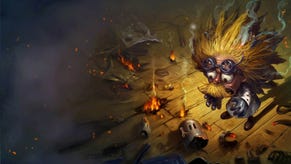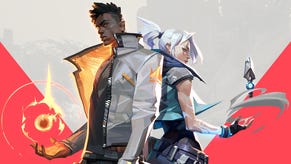League Of Legends' Greg 'Ghostcrawler' Street Talks Balance - Is It Even Possible?
All change?
League Of Legends boasts a huge roster of playable characters which bring the potential for vast numbers of potential compositions, ability interactions. It also has a player base quick to seek out what's strong at any given time in the game's ongoing development. So how do you approach that as a designer? Is the idea of perfect balance even possible or do you tweak characters so that batches rise and fall in relative popularity? Michael got in touch with Riot Games' design director Greg 'Ghostcrawler' Street to get a clearer feel for the studio's philosophy when it come to their champions:
One of the criticisms often levelled at League of Legends is that it’s not a balanced game, that the design team and the Champion creation team seem focused on creating a rotating meta instead of working towards an end-game of perfect equilibrium. This opinion largely stems from Riot’s new policy of patches that focus on a specific set of champions, adding new mechanics and giving them targeted buffs that can upset or heavily impact the meta of the game.
Prior to last season’s World Championship, a patch arrived called the 'Juggernaut' patch, where several tanky heroes who had fallen from favour or had never been competitively viable received a lot of attention. A number of fans felt these changes went too far, resulting in a World Championship tournament that bore little resemblance to the season which had preceded it. Riot have since introduced a Marksman update, changing the meta in favour of AD carry champions, again shifting the balance of power and resulting in a radically different way of playing the game. This summer will see the Mage update - are these seasonal changes what we can expect from League of Legends going forward?
We spoke to Greg Street, Riot Games’ design director, to try and understand the long-term goals for the balance and design teams and also to ask for a response to some of the accusations leveled at the game about its perceived lack of balance. Make no mistake, this summer's Mage update is a big one for Riot and fans will use it as a marker to see if Riot can live up their lofty ideals. If not, they’ll almost certainly face further criticism.
Michael Johnson: In a previous AMA one of the ideas that came up was the notion that Riot is trying to enforce a 'rotational meta,' and it was something both Meaghan 'TimeWizard' Bowe and Brian 'FeralPony' Feeney rejected. I'd like to know firstly what was meant by a rotational meta from your perspective?
Greg Street: Philosophically, we try to make changes that improve the game. We always want to move forwards. At times, that does mean we have to take one step backwards for the proverbial two steps forward, but what we don't want to be doing is just shifting the game from one state to another and back again. When Time Wizard said that it was someone's "time to shine" or something similar [I believe it's this section - Ed.], I think what she meant was that when we neglect a champion who is underpowered or overpowered for too long, we feel a lot of pressure to act.
What we try to avoid is proclaiming that it's now the tanks' turn to be overpowered and next it will be the assassins’ turn to be dominant, or whatever. While you can artificially force champion diversity that way, in the long term it comes at a pretty heavy cost. Players learn that the time they invest in experimenting and learning new champions or strategies isn't worth it, because at the end of the day, Riot will step in and reshuffle the board.
Put another way, if playing League is like running an obstacle course, it's okay to change or replace obstacles that are too easy or too hard to surmount. On the other hand, arbitrarily swapping the placement of obstacles in the intent of catching players off guard, or having someone unexpectedly shake the net they are trying to climb feels like a cheap way of making the obstacle course harder. Because those interferences I just described are so random as a player you don't feel like you can get better at the obstacle course. The heart of League is how satisfying it feels to improve at the game, and artificially making things harder works against that mastery process.
I tell the designers to imagine, as a mental construct, that there is a perfect state of League of Legends out there. Realistically we'll probably never reach it in our lifetimes, but we should strive to make changes that move us towards that goal, not just make sideways changes for the sake of change.
The follow up to that is that we've seen the Juggernaut champions kind of fade away at the top levels of play and replaced with the champions from the Marksmen update (as well as the counters to them i.e. Malphite [note, a more current example would be Nautilus]), is this what we can expect to be the new status quo in the game? Will the Mage update bring about another seismic shift in which champions are viable at the expense of the Marksmen, or is it difficult to judge the effect of these big changes?
GS: I think in many ways the Marksman update was more successful than the Juggernaut update, so that leaves us with more viable Marksman champs that didn't exist before. I also think players get excited about seeing changes (especially when they’re changes that add depth) so it's not surprising players would want to try out updated champions. We will also take blame for some of them just being overpowered as part of the update. So following that, I expect you'll see a lot more mages being played if the mage update is successful, but I hope that doesn't mean Marksmen no longer feel fun or viable.
Is the idea of 'balance' as this sort of thing where every champions is viable/unique still even possible with a game like LoL with such a huge champion roster? Or is it more about (as Time Wizard stated in the AMA) making sure that each champion has time to shine at one point or another"?
GS: Like I said above, I think it is possible in a theoretical sense to achieve perfect balance, but it is so very, very hard to do that we don't set out with the expectation of ever actually achieving perfection. But keeping that framework in mind hopefully does guide the team to make *good* changes and not just changes. A good change adds depth and replayability and diversity, and is done with a purpose in mind.
We aren't looking for a 50% winrate and play rate for every champion, because some champs may always be easier or harder, or more fun to play, or more niche experiences. That's fine. But we don't want players to feel like raw power is holding them back, either forcing them to pick a champion they don't really want to play, or denying them a champion they really do enjoy.
Finally, for the long-term health of League of Legends, do you think it's more important to change things up every now and then, with different champions being powerful and popular to keep the game varied and fresh for players/viewers, or to aim long-term for the idea of overall balance? Or is it a middle-ground between the two?
GS: Evolution is one of our design values. League is always going to grow and change, and players who are looking for a game state that calcifies aren't going to find it with League. While we don't want to make arbitrary changes, we do want to respond to problems in the game, so for example - we don't view long patch notes as a scary thing to be avoided.
Now, we do describe League as a curated experience. It's not some kind of wild animal that mutates on its own without direction: it's something that Riot takes a hand in guiding along the way. When we say that we want to keep the game fresh, what we mean is that just when players start to get bored, maybe there is something new coming around the bend.
I'll hit a couple of examples. We thought that top lane felt a little too isolated, and while we know that's what some top laners enjoy about the experience, we want the actions in top lane to still have strategic relevance for the rest of the team. We added the Rift Herald to give a strategic objective (one that can change the fate of the entire team) to solve this problem. It's tuning isn't perfect yet, but we think the idea is solid.
Masteries was one of those systems that hadn't aged well. Through millions of games, players had largely solved on their own which were the smart choices and which were the poor choices. Almost all players just looked up accepted builds and ignored the system after that. A system intended to provide some amount of player engagement was completely failing on that front. So we recently changed the content of specific masteries, as well as the structure of the trees themselves. That's not change for the sake of change - it's change to add depth where the depth had all but dried up. And what's more, we know that this mastery overhaul isn't going to provide enough depth to stand the test of time, so the changes we made at the end of 2015 were done as a short term fix knowing that we have an even more ambitious overhaul in mind that we'd love to deliver in 2016 or 2017.
The same arguments can be made for champions. If assassins are perceived as being too weak, unreliable, or poor strategic choices, then players are less scared of being caught out in the open alone. If specific champions are so weak or shallow that they are never seriously picked, then it kind of defeats the purpose of having 130+ champions, and we can't count on new champions to offer a new set of challenges to master.
Using the obstacle course analogy again, there's no point having 12 obstacles in the course if everyone knows of a shortcut after obstacle #2 that skips everything else. League players are smart, and there are a lot of them, and they play a lot of games, so it's pretty easy for players to find short-circuits like this. As a player, it's fun to find these short-circuits. But as they do, we try to respond as quickly as we can, without anyone feeling slapped on the wrist for trying to find new strategies to make themselves more effective.
Thank you for your time, Greg!










